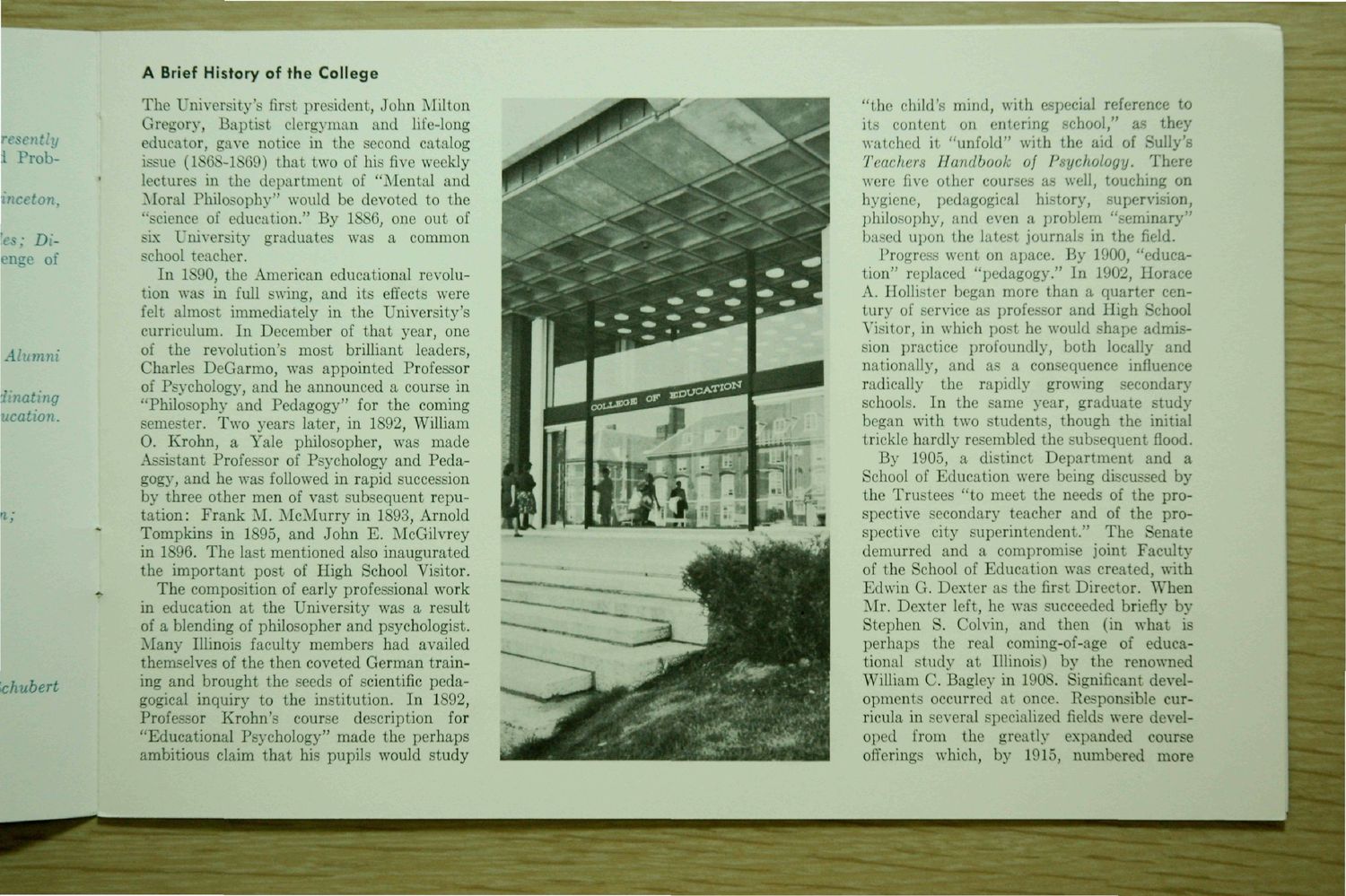| |
| |
Caption: Dedication - College of Education Dedication
This is a reduced-resolution page image for fast online browsing.

EXTRACTED TEXT FROM PAGE:
A Brief History of the College ily Probnceton, - : Diof tmni letting ucation. The University's first president, John Milton Gregory, Baptist clergyman and life-long educator, gave notice in the second catalog issue (1868-1869) that two of his five weekly lectures in the department of "Mental and Moral Philosophy" would be devoted to the "science of education." By 1886, one out of six University graduates was a common school teacher. In 1890, the American educational revolution was in full swing, and its effects were felt almost immediately in the University's curriculum. In December of that year, one of the revolution's most brilliant leaders, Charles DeGarmo, was appointed Professor of Psychology, and he announced a course in "Philosophy and Pedagogy" for the coming semester. Two years later, in 1892, William O. Krohn, a Yale philosopher, was made Assistant Professor of Psychology and Pedagogy, and he was followed in rapid succession by three other men of vast subsequent reputation: Frank M. McMurry in 1893, Arnold Tompkins in 1895, and John E. McGilvrey in 1896. The last mentioned also inaugurated the important post of High School Visitor. The composition of early professional work in education at the University was a result of a blending of philosopher and psychologist. Many Illinois faculty members had availed themselves of the then coveted German training and brought the seeds of scientific pedagogical inquiry to the institution. In 1892, Professor Krohn's course description for "Educational Psychology" made the perhaps ambitious claim that his pupils would study "the child's mind, with especial reference to its content on entering school," as they watched it "unfold" with the aid of Sully's Teachers Handbook of Psychology. There were five other courses as well, touching on hygiene, pedagogical history, supervision, philosophy, and even a problem "seminary" based upon the latest journals in the field. Progress went on apace. By 1900, "education" replaced "pedagogy." In 1902, Horace A. Hollister began more than a quarter century of service as professor and High School Visitor, in which post he would shape admission practice profoundly, both locally and nationally, and as a consequence influence radically the rapidly growing secondary schools. In the same year, graduate study began with two students, though the initial trickle hardly resembled the subsequent flood. By 1905, a distinct Department and a School of Education were being discussed by the Trustees "to meet the needs of the prospective secondary teacher and of the prospective city superintendent." The Senate demurred and a compromise joint Faculty of the School of Education was created, with Edwin G. Dexter as the first Director. When Mr. Dexter left, he was succeeded briefly by Stephen S. Colvin, and then (in what is perhaps the real coming-of-age of educational study at Illinois) by the renowned William C. Bagley in 1908. Significant developments occurred at once. Responsible curricula in several specialized fields were developed from the greatly expanded course offerings which, by 1915, numbered more •M
| |